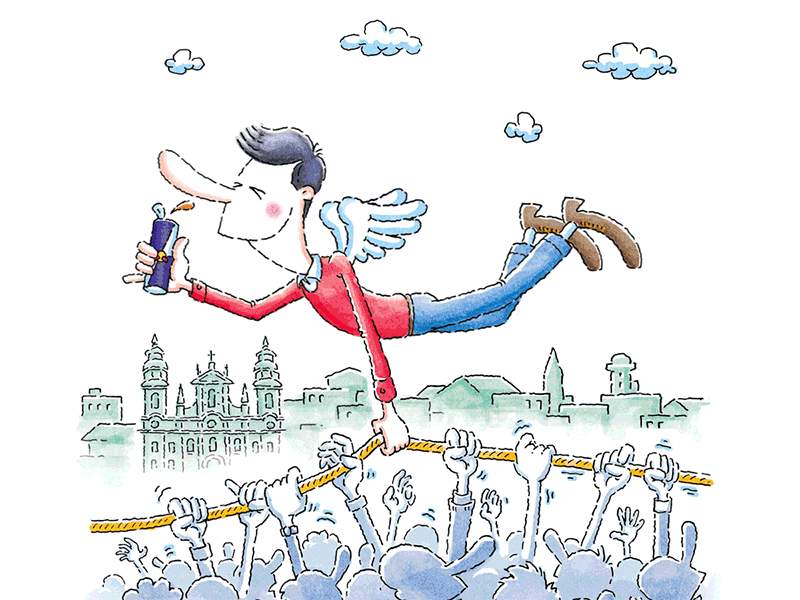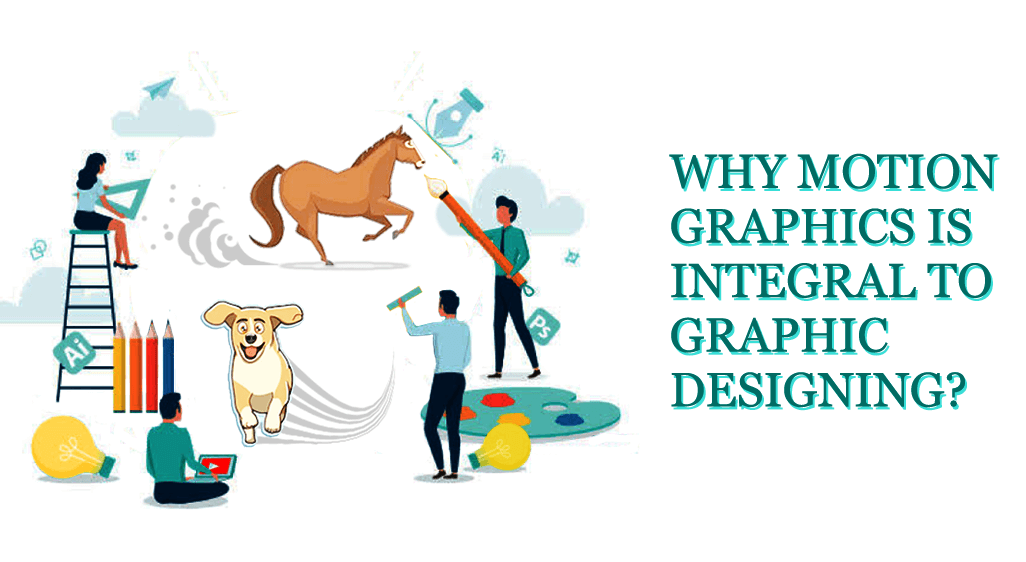Why Motion Graphics Are An Integral Part Of Graphic Designing?
90% of the information that reaches our brain is visual. We can process and understand images 60,000 times faster than text. While words go to our short-term memory, images are directly processed by long-term memory.
What do these facts and figures mean?
They mean motion graphics are essential to design.
Why?
Because every motion not only tells a story but also helps remember it.
How?
By adding a layer of interaction and making the experience of navigating a site or an app more natural. So, when you include animation or motion in graphic designing, you make it more powerful.
What is motion in graphic design?
Wikipedia says motion graphics is an animation that creates the illusion of motion like rotation. In simpler words, motion in graphic design means taking a static image and adding movement to it. An example would be integrating movement into an otherwise plain logo, or making the bars of a bar chart move up and down or side to side.
Students in a motion graphics course often use animation and motion design as synonyms. The terms are not interchangeable. Just like there is a difference between motion and graphic design, so is there a difference between animation and motion graphics.
Animation tends to have a specific narrative, a story behind it or characters. Motion design, on the other hand, is used to make content eye-catching. It is also used to compress complex concepts or things into bite-sized packages that are easy to digest.
Why are motion graphics essential in graphic design?
The reason motion graphics is so important is that it helps tell a fuller story. These interactive graphics connect to the user, creating engagement. By simply adding motion to objects or elements, you evoke emotions in the viewer and that entices them to take an action like.
Let’s paint you a picture:
Imagine a webpage loading. Right at the centre is an icon in motion that smiles. Two things happen as you watch the icon. One, you patiently wait for the whole page to load instead of closing the browser. Two, the smiling face raises your spirit and makes you smile too!
Creative and effective storytelling is just one of the reasons motion graphics are integral to designing. There are other advantages too:
It makes for impactful branding.
Motion graphics are incredible branding tools. With just a little animation, a logo can become sharper and more dynamic. On top of it, incorporating the theme of the logo into other parts like stop motion videos brings more consistency to graphic design and that creates an excellent visual impact.
An example:
Red Bull ingeniously uses motion graphics with their tagline “Red Bull gives you wiiiings”, bringing more personality to the brand. That elicits excitement, anticipation, and curiosity in viewers.

It helps stand out from the crowd.
The competition today is cut-throat. Every Ram, Sita and Gita on the internet is vying for the attention of people. That said, basic websites or social media posts have stopped working. Motion graphics bring that extra oomph to graphic design that bags attention.
It drives user attention and action.
The uniqueness of motion graphics engages people, and it compels them to interact with the design, which leads to higher conversion. When appropriately applied, they can tell people what to expect from the app, site, page, etc.
Take, for instance, an app. From the very first page of the user interface, motion graphics can be used to build touchpoints and guide a person through the entire customer journey.
An example:
Open Samsung’s or Apple’s website. You’ll notice in between text, they use GIFs, short videos and other small motion graphics. All of them act as visual clues on how to use the website.
Or take Instagram’s “swipe up” feature in Stories. The social media platform relies on motion graphics to alert a viewer. Without that subtle motion, a person may miss the link attached to the Story!
It provides real-time feedback.
A primary advantage of motion in graphic design is the feedback. An example of feedback is the flashing red gaming apps use to show users a wrong step was taken.Or using a dancing thumbs-up button to tell the user they’ve made the right move.
YouTube is textbook example of motion graphics being used for real-time feedback. When you click the red subscribe button on the video platform, the copy changes to “Subscribed.” If you click the button again, it reverts to “Subscribe.”
An example:
Travel websites often show an aeroplane flying when a person searches for flights. It’s a small motion graphic subtly included on the website to tell the user what is happening.

Another example is motion graphics used on e-commerce sites like Amazon and Flipkart. During the festive season, they do it to emphasize deals and discounts.
It creates an intuitive and fun UI.
In the overall picture of graphic designing, fun is very low on the totem pole. But if you ask the person browsing a site, a presentation, or an app, fun is vital. That is what motion graphics brings to the table. It makes the design enjoyable and, more importantly, intuitive for the user.
Regardless of how great the images are or how amusing the text is, without some motion graphics on the page, the overall design will not command attention. Plain text overwhelms people, but when motion graphics come into play, they lend aesthetic balance.
An example:
Ever had to wait for a website to load?And got bored of it in less than 4 seconds and jumped to another site?
Now open this site (seriously click on the link).
See the dog running? It’s a simple motion graphic, yet it takes the boredom out of a loading screen and makes it fun to wait.
It reduces abandonment.
The reason is obvious. Motion graphics keep users engaged as they wait for the next page or element to load. Because a user can see an interactive design, they are content to wait as long as it takes. This lessens the number of people who abandon the site.
A bonus:
Including motion graphics in any content, be it an article or website, increases the chances of it landing on the first page of Google search by 53x!
The wrap up on motion graphics
When taken separately, each of these benefits appears small. How much of a difference can an animated page loading icon make?
Alone, not much.
But when you apply motion to graphic designing as a whole, it creates a cohesive experience. It impacts the user on a personal level and builds a relationship. However, you don’t want to add too much of it.
So how do you learn to effectively use motion graphics in graphic designing?
We thought you’d never ask.
If you’re thinking of becoming a motion designer, enroll in a web and graphic design course. They’ll teach you the ABCs of motion graphics. If you’re already a motion graphic designer, here are 3 tips:
- Social media posts and ads are a great way to include motion graphics and build a brand presence.
- Utilise motion graphics for infographics and product shorts to engagingly explain a product or service to customers.
- Lastly, include motion graphics in promotional content. Think: call-to-action buttons, sales, deals, contact us buttons, etc.












